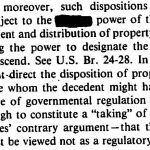- A good mattress protector fits well, is comfy to sleep on, and protects your bed from accidents.
- We tested 11 models and consulted with an expert to find the best mattress protectors.
- The Purple Mattress Protector is our top pick; it passed our leak tests and dissipates heat well.
In my many years of mattress testing, I’ve noticed that paying extra for a high-quality bed can go a long way in improving your quality of life. But, in order to get the most out of your investment, you need to protect your mattress from everyday wear and tear. This is where mattress protectors are useful.
Most mattress protectors keep spills and other accidents from seeping through to your mattress. They are also helpful in keeping dust mites and other allergens from taking up residence in your bed and irritating you. If you’re concerned about bed bugs, mattress encasements offer total coverage of your investment.
For this guide, I tested 11 mattress protectors and encasements and consulted with Rebecca Robbins, PhD, associate scientist at Brigham and Women’s Hospital and instructor in medicine at Harvard Medical School.
I have been testing sleep products professionally for four years. And, while there is a level of subjectivity to mattress protector preferences, I have developed numerous objective tests to determine which models are best for specific needs. You can find details about how I test mattress protectors here. Each protector I tested was for a Queen mattress, which is the most popular size.
In addition to our top picks, we list other models we recommend, what we look forward to testing, and common FAQs and terms worth knowing at the end of the guide.
Here are the best mattress protectors in 2021
- Best mattress protector overall: Purple Mattress Protector
- Best budget mattress protector: SafeRest Premium Mattress Protector
- Best cooling mattress protector: Helix Mattress Protector
- Best mattress encasement: Utopia Bedding Zippered Mattress Encasement
James Brains/Insider
If you’re looking for a comfortable mattress protector that can keep your bed safe from spills and other accidents, the Purple Mattress Protector is your best bet with its five-sided coverage.
Pros: Passed our leakage tests before and after washing, absorbs most of the liquid spilled on it, the most comfortable model we slept on, great heat dissipation, 10-year warranty, features head/foot label, protection extends to the sides
Cons: Strong initial odor, the protector got hot after a night of sleeping on it (but the heat dissipated quickly)
When I first unboxed the Purple Mattress Protector, I thought it was too thin and felt too nice to protect my mattress from anything. But, after testing it, my initial assumptions were just plain wrong. Both before and after washing the protector five times, no liquids leaked through. It was one of two models we tested that absorbed more than 75% of the liquids we poured on it, which may be helpful for containing accidents.
Due to its thin construction, I found the Purple was one of the most comfortable mattress protectors to sleep on. I hardly noticed it was there. It made minor rustling noises, but they weren’t disconcerting as I shifted in the night. After laying on the Purple protector overnight, it registered one of the hottest temperatures the next morning, but it also appeared to cool down quickly, suggesting it has great heat dissipation.
Whereas many mattress protectors only have a polyurethane protective backing on the portion that covers the top of your mattress, the Purple’s construction is uniform throughout, offering true five-sided protection on the top and sides of the mattress.
Putting on the protector was effortless thanks to the stretchy spandex in the design and the helpful label that tells you which side goes at the head/foot of the bed; the only protector we tested to include such a label.
The biggest negative with the Purple Mattress Protector is the strong initial odor it had out of the box. Fortunately, it dissipated by bedtime.
The best budget mattress protector
James Brains/Insider
The SafeRest Premium Mattress Protector is an outstanding option when you want a cheap way to protect your mattress from liquids, dust mites, and other harmful elements.
Pros: Passed our leakage tests, fits mattresses up to 18 inches, didn’t shrink after five washings, doesn’t get very hot and dissipates heat well, 10-year warranty
Cons: One of the least comfortable models we tested, makes significant crackling sounds as you move around on it, only offers protection to the top of your mattress
We tested four mattress protectors that cost less than $30. Of those, the SafeRest Premium Mattress Protector performed the best. In addition to remaining leak free in our tests, it was one of the best at staying cool and dissipating heat.
The SafeRest protector can fit a broad range of mattresses up to 18 inches thick. As with many protectors, the part that rests on top of your mattress is made of a different material than the skirt that goes around the sides. The top is waterproof, while the sides are not. Fortunately, I found the top fit the mattress well and covered it to the edges, even after putting it through the washer and dryer five times.
The surface is terry cloth, which I didn’t find particularly comfortable. As I moved in the night, it made a lot of crackling noises and my fitted sheet didn’t shift smoothly on the terry cloth; however, neither issue affected my sleep.
If you find you don’t like the SafeRest Premium Mattress Protector, you can return it within 30 days for a full refund. And, if you keep it, it’s covered by a 10-year warranty.
The best cooling mattress protector
James Brains/Insider
You don’t have to sacrifice comfort when you choose the cooling Helix Mattress Protector to protect your mattress.
Pros: Great heat dissipation, quiet when you move around on it, passed our leakage tests, didn’t shrink in the wash, 100-night trial period
Cons: One-year warranty, only waterproof on top and not sides
When researching this guide, one of the complaints we heard about mattress protectors is that they can trap heat and cause sleepers to overheat. So, we looked at how hot the mattress protectors get after sleeping on them and how quickly the heat dissipates. The Helix Mattress Protector was one of the best at staying cool and dissipating heat quickly. In fact, within two minutes of getting up from the bed, the surface temperature plunged more than 14 degrees.
The Helix didn’t perform poorly in any of the categories we evaluated. It passed the leakage tests with flying colors both before and after putting it through five washing and drying cycles. The protector also didn’t show any shrinkage after the washings, which is important since the waterproof TPU backing is only on the part of the protector that covers the mattress top and not on the skirting.
I found the Helix Mattress Protector was comfortable to sleep on with its soft surface. I tend to overheat at night, but I didn’t experience any issues while on the Helix. It was also one of the quietest protectors in our tests. I didn’t notice any crackling or rustling as I shifted in the night.
At 100 nights, the Helix protector has one of the longest trial periods of any of the models we tested, but it also has one of the shortest warranties — just one year.
The best mattress encasement
James Brains/Insider
The Utopia Bedding Zippered Mattress Encasement is the best way to protect your mattress from liquids, bed bugs, and dust mites.
Pros: Protects against bed bugs, passed our leakage tests, quiet to sleep on, doesn’t get too hot, zips up to completely encase your mattress
Cons: A pain to put on, no warranty
One of the worst experiences of my life was dealing with a bed bug infestation. These blood-sucking critters cost hundreds of dollars to get rid of, and even then, there’s no guarantee they won’t come back. We dealt with them for two years before we moved cross-country, but I still get a rush of anxiety when I see a piece of lint or other tiny debris on a mattress.
In my experience, it’s worth the $20 investment to cover your mattress with a full encasement. The best encasement we tested is the Utopia Bedding Zippered Mattress Encasement.
It passed the leakage tests before and after washing, and most of the liquid pooled on the surface of the encasement. It was one of the quietest protectors, and never got very hot when I was sleeping on it.
The biggest pain with any encasement is putting it on. Fortunately, the Utopia Bedding encasement has a wide zippered opening that makes it easier to slide over your mattress as you hold it up vertically. Once zipped, there’s a velcro flap that keeps the slider body and pull tab in place and ensures there aren’t any holes for bed bugs to sneak through.
The Utopia Bedding encasement was comfortable to sleep on. The thin material was barely noticeable under the fitted sheet. The only major negative is that it doesn’t come with a warranty.
Lastly, it’s worth noting that no encasement protects you from getting bed bugs. Instead, it protects your mattress, an expensive investment, from harboring bed bugs that can destroy it over time. If a mattress is already riddled with bed bugs, an encasement can also trap those buggers in. But, you need to keep the encasement on for at least 12 months to kill all the bugs, and you’ll still need to treat your home.
What else we tested
James Brains/Insider
We tested 11 mattress protectors and encasements for this guide. These are the ones that missed the cut.
What else we recommend and why:
Bear Protector: There’s a lot to like about the Bear Protector, but it just wasn’t the best in any of our categories. It was one of the quietest, and in addition to being leak-free, it also absorbed more liquid than any of the other models. The biggest negative was that it seemed to hold onto heat. Still, if you want a mattress protector that will absorb any spills rather than pooling, this is a great option.
Tuft & Needle: We like that this protector comes with a 100-night risk-free trial period and is made of OEKO-TEX certified materials, which means it’s an eco-friendly alternative. It also passed our leak tests, but it only fits mattresses up to 14 inches thick, and it was one of the worst at dissipating heat.
Lucid Premium Terry Top: This is the most affordable protector we tested, has the longest warranty (15 years), and can fit the thickest mattress sizes (up to 22 inches), but it was one of the noisiest and got pretty hot while lying on it. Still, if our budget pick is sold out, this is a worthy backup.
What we don’t recommend and why:
Casper Waterproof: In general, I’m a fan of Casper products. Its sheets are among the most cozy I’ve slept on, and its Nova Hybrid is one of the most comfortable mattresses I’ve tested. But, the company’s mattress protectors get a hard pass from me. While the Casper Waterproof lives up to its name by passing our leakage tests, it was the hardest one to put on because of its small elastic ring. I worked up a sweat each time I wrestled it on. Plus, it comes with a minimal one-year warranty.
Linenspa Encasement: We were hoping this would be a good alternative if the Utopia Bedding encasement isn’t available, but we can’t recommend it. It passed the leakage tests, protects against bed bugs, and has a nice 10-year warranty. But, it only fits mattresses up to 12 inches thick, made loud rustling sounds when moving on it, and it trapped heat.
Casper Breathable: This protector is water resistant, not waterproof. Consequently, it was the only protector we tested that failed the leakage tests, both before and after we washed it five times. It also appeared to shrink in the wash so there were portions of the mattress that weren’t covered by the top section of the protector. The Casper Breathable protector only has a one-year warranty. It was cooler and quieter than most of the other models, but at $149, it needs to protect your mattress better.
PlushBeds Organic Cotton: The two priciest protectors we tested were two of the worst. This PlushBeds mattress protector passed the leakage tests, but that was about the only bright spot. It was one of the loudest models we tested, and after washing, it no longer covered the top of the mattress properly. Also, it never failed to get tangled up in the dryer, making it a pain to clean.
Our testing methodology
James Brains/Insider
I personally tested all of the mattress protectors in this guide. In addition to sleeping on each protector, there are many objective tests I put each model through. The most important factors to consider when choosing a mattress protector are comfort, protection, and fit.
Here are the main attributes we look for and how we test them:
Comfort: I slept on each of the mattress protectors (with a fitted sheet in place) and rated how comfortable they felt on a scale of 1 to 5. Most of the protectors were barely noticeable and none scored below a 3.5. I also used a laser thermometer to compare the temperatures before lying on the protector, after lying on it for at least an hour, and two minutes after getting up. This told me how well the protector dissipated heat. To control the variables that might affect comfort, I used the same mattress and sheets to test each model.
Protection: I placed a sheet of paper towel in a plastic tray and set it beneath the center of each mattress protector. Next, I poured eight ounces of blue water on top of each protector. Then, I placed a two-pound weight on the liquid to simulate someone laying on it. I let the water sit for two hours before checking to see if it leaked through. I then washed and dried each of the protectors five times and performed the test again. Though I wasn’t able to test for them, I also noted if the protectors are designed to protect against dust mites and bed bugs.
Fit: I put each protector on a variety of mattresses ranging in thickness from 10 inches to 14 inches and noted how difficult it was to put it on, if the protector bunched up, if the protective top covered the whole mattress top, and whether it stayed put or creeped up the corners over the course of the night. Next, I washed and dried the protector five times and performed the test again.
Noise: The polyurethane used to waterproof most mattress protectors sometimes makes a crackling sound as you move in the night. This sound has the potential to lead to restless sleep, so I compared all of the protectors head-to-head to see how loud they are. I crinkled each one in my hands. As I did this, I put the protectors in order from quietest to loudest. I kept doing this until I was confident my order was accurate.
Trial and Warranty: The most foolproof way to know if a mattress protector is comfortable for you is to sleep on it for an extended period, so a long trial is a must. I looked at how long the trial period is (30 nights was the median of the protectors I tested) and if there are hidden return fees. I also looked at the warranty length (five years was the median of the models I tested).
What we’re testing next
We’re constantly testing new mattress protectors and retesting our top picks to determine the best ones. Here’s what we’re looking forward to testing for potential inclusion in this guide:
The Company Store Waterproof Cotton Mattress Pad: This is a pad and protector in one keeping your mattress protected from spills and adding a soft layer to your bed. We like that it fits mattresses up to 22 inches deep and comes in Crib size.
Protect-A-Bed AllerZip Smooth Mattress Encasement: In order to beef up our encasement recommendations, we’re looking forward to trying this Protect-A-Bed model, which is designed to protect against liquids, dust mites, bed bugs, and allergens while remaining comfortable.
Hospitology Products Zippered Mattress Encasement: Another polyester encasement option that protects against bed bugs, liquids, and other substances. We’re curious to see how it compares to the Utopia Bedding encasement.
FAQs
James Brains/Insider
Why do you need a mattress protector?
Rebecca Robbins, PhD, associate scientist at Brigham and Women’s Hospital and instructor in medicine at Harvard Medical School, stresses the importance of using a mattress protector to keep your bed free of dust mites and spills.
“It sounds gross, but dust mites accumulate in the bedroom environment for a couple of reasons,” said Robbins. “When you spend seven to eight hours in a single place like your bed, a lot of your natural skin exfoliation is going to happen there. So unfortunately, over the course of gentle movements during sleep, you shed hair and skin. We are shedding particles that attract dust mites. So whether you have allergies or not, it is a great idea to use a hypoallergenic mattress protector.”
Unfortunately, “hypoallergenic” is a nebulous term that isn’t regulated by any governing body so any manufacturer can claim its protector is hypoallergenic, and many do. The key to protecting your mattress from dust mites is choosing a material that is impermeable, such as polyurethane, which is found in all of the waterproof protectors in our guide.
“A lot of the mattress covers have a waterproofing component on the top layer,” said Robbins. “So if there are any liquids in the bed or if someone has a bed-wetting accident, it ensures your mattress is protected. And a mattress protector can also help extend the general life of your mattress and reduce the overall wear and tear. So it’s always a good idea to make sure that when you’re buying a new mattress, you’re coupling it with a mattress protector.”
How often should you wash a mattress protector?
You can wash a mattress protector as often as you’d like, but how often you should wash it depends on why you are using a protector in the first place. If you suffer from allergies and want to keep dust mite buildup to a minimum, we recommend washing your protector every two to four weeks.
If your main concern is protecting your mattress from spills, we recommend washing much less often — anywhere from once every two to six months. However, if you have an accident, you should wash the protector immediately. To extend the life of your protector, you want to keep washing to a minimum because the waterproof polyurethane layer can wear away leaving the protector susceptible to leaks. All of the waterproof protectors we tested were still waterproof after five washings.
Lastly, if you’re using a mattress encasement to keep bed bugs in, you don’t want to remove it for at least 12 months. That’s about how long it takes to ensure that all of those little vermin are annihilated.
What is the difference between a mattress protector and encasement?
There are two main types of mattress protectors: five-sided and encasement. The difference is how much of the mattress it covers. Five-sided mattress protectors cover the top of the mattress and the sides, which makes them ineffective against bed bugs, which can easily crawl to the bottom of the mattress. However, five-sided protectors are usually good for keeping liquids and dust mites from getting to your mattress.
Five-sided protectors vary in their coverage. They generally have a top section that protects the top of your mattresses. Where they vary is on the sides. Some, including our top pick, use the same protective, top-panel material on the sides. Other models have a basic polyester-blend skirt that doesn’t protect against spills or dust mites.
Mattress encasements completely “encase” the mattress. They usually have zippers that seal the mattress in and protect all six sides from liquids, dust mites, and bed bugs.
How do you put on a mattress encasement?
Unlike most mattress protectors, a mattress encasement completely envelopes your mattress. This makes putting it on difficult. However, there are a few tricks that can help. First, unzip the mattress encasement as much as possible. Next, stand your mattress up on end so either the head or the foot is on the ground. You may want to get someone to help you with this since mattresses can be unwieldy.
With the mattress standing on end, slide the mattress protector over it starting from the top. It should slide on easily unless you have a thicker mattress, in which case you may need to pull down a little at a time as you alternate sides. Once you’ve pulled the encasement all the way down, you can lay the mattress back down on your frame and zip it. Your mattress is now protected.
Can mattress protectors prevent bed bugs?
No mattress protector can prevent bed bugs. However, an encasement can keep bed bugs from getting to your mattress, a popular destination for them. Encasements can also trap bed bugs that are already in your mattress, which causes them to starve and eventually die, though this can take up to a year.
To protect your mattress from bed bugs, most mattress protectors won’t do. You need something that completely encases your mattress and zips closed so nothing can get in or out. Look for models that specifically say they protect against bed bugs. Our best mattress encasement pick checks these boxes and only costs about $20.
Check out our article on how to get rid of bed bugs for more tips.
Check out more buying guides for mattresses and bedding
James Brains/Insider
Powered by WPeMatico






